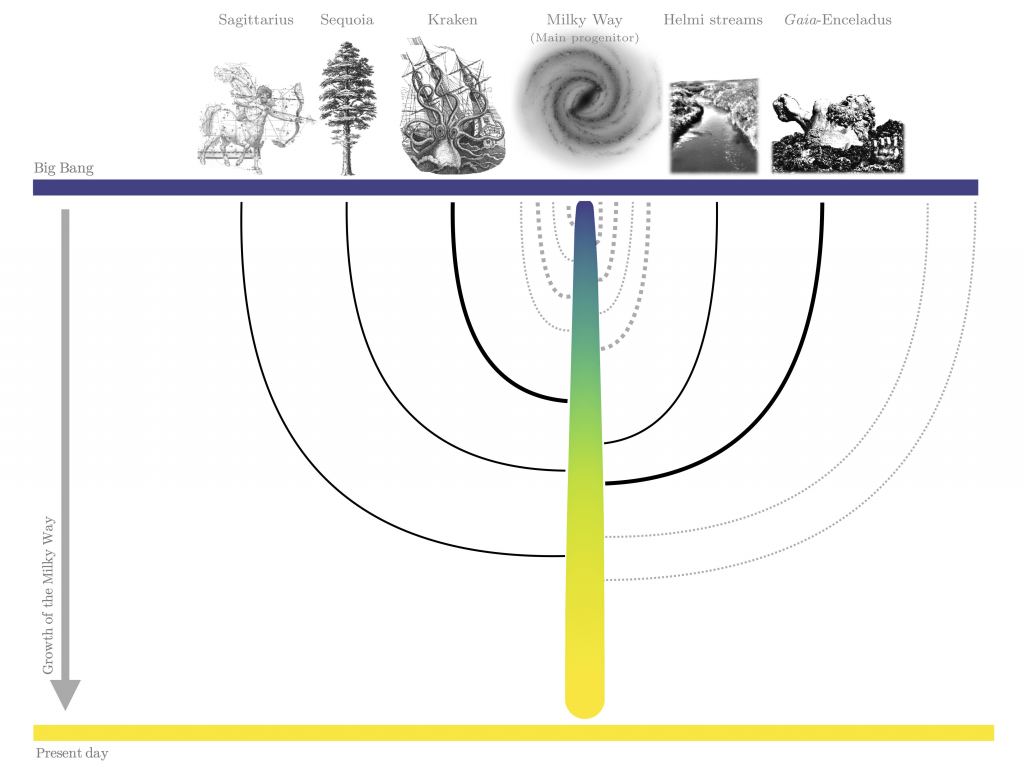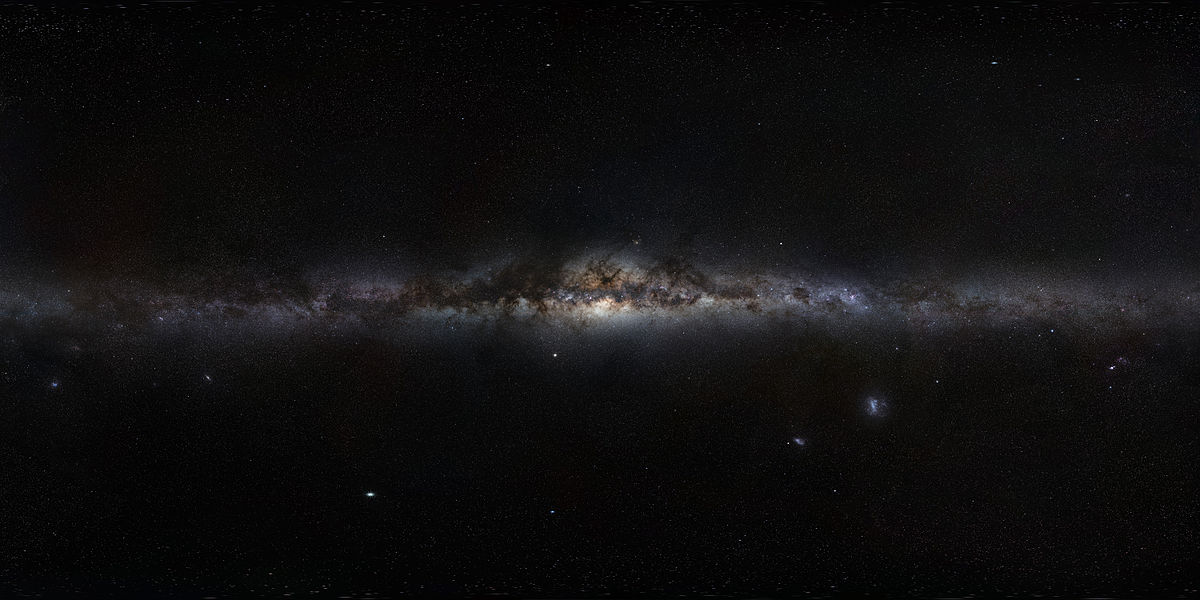Galaxies build themselves up slowly over time by cannibalizing their neighbors. Using an advanced suite of computer simulations, researchers have now traced back the evolutionary history of our own Milky Way.
Our galaxy, the Milky Way, currently hosts hundreds of billions of stars, and is pretty respectably sized for the kind of galaxy it is. But it hasn’t always been this big – nor has any other galaxy in the present-day universe. Galaxies grow slowly over the course of billions of years, mostly by eagerly merging with each other.
The Milky Way participated in this violent upbringing, consuming any smaller galaxy that came wandering by in the course of its 10-billion-year-plus history.
And it ate a lot.
A group of researchers have come up with a clever way to document the history of the Milky Way’s mergers using a combination of data taken from globular clusters and a suite of computer simulations.
It works like this. Globular clusters are dense clumps of old, red stars, some of which are thought to be leftover cores of galaxies that the Milky Way has devoured in the past. Astronomers have mapped over 150 such clusters, and by tracing their motion through our galaxy along with their characteristics (like their ages and chemical compositions) they can trace which clusters likely entered our galaxy at different times.
Then the researchers used computer simulations of galaxy formation that included the behavior of globular clusters. They studied galaxies like the Milky Way, and tuned an AI neural network to be able to reconstruct the merger history from the present population of globular clusters.

License type: Attribution (CC BY 4.0).
Once tuned, they fed the real data from our galaxy into the simulation, and out popped a most-plausible merger history, indicating when other galaxies slammed into the Milky Way.
The results show a history of violence. The smaller galaxies, with awesome names like Kraken and Sequoia, merged with our galaxy billions of years ago. Some of those galaxies were large enough to distort the Milky Way for a billion years or more as it recovered from the collision. In total, the Milky Way suffered about 5 mergers with galaxies containing at least 100 million stars, and ten more with galaxies hosting at least 10 million stars.
Since we only have evidence (in the form of leftover globular clusters) of five of those collisions, these simulations point the way to finding even more wreckage tumbling through our galaxy.

